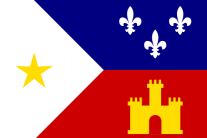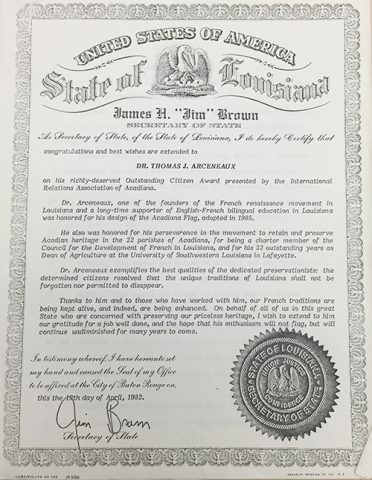Did You Know About ... UL Lafayette and the Acadiana Flag?
Thu, 11/19/2015 - 11:00amOn the Friday after Thanksgiving, Louisiana celebrates Acadian Day. Former Gov. Edwin Edwards established the holiday in 1987 to commemorate the Acadian people's arrival in Louisiana, and each governor since then has continued the tradition of observing the holiday. Acadiana is a region full of rich history and culture, thanks to the settlers who made South Louisiana their home.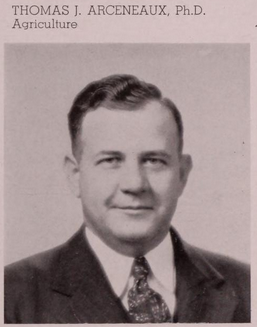
But did you know that the University of Louisiana at Lafayette has a special connection to the official flag of Acadiana?
College of Agriculture Dean Thomas J. Arceneaux designed the flag in 1965, which was then adopted as the official flag for Acadiana on July 5, 1974. Dr. Arceneaux was a charter member of CODOFIL (the Council for the Development of French in Louisiana), and was a longtime supporter of immersive French language programs in area schools. He incorporated elements from the original Southwestern Louisiana Institute (now UL Lafayette) seal, which was designed by John McBryde in the late 1920s.
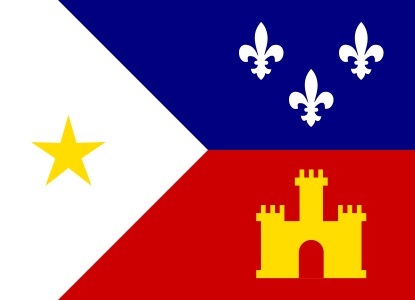 The symbols and colors on the flag represent our region's French and Spanish influences. The three silver fleur de lis on the blue portion of the flag are for the French heritage. The Spanish portion is the gold tower on the red section of the flag (from the traditional arms of Castile), included because Louisiana was ruled by Spain when the Acadians arrived.
The symbols and colors on the flag represent our region's French and Spanish influences. The three silver fleur de lis on the blue portion of the flag are for the French heritage. The Spanish portion is the gold tower on the red section of the flag (from the traditional arms of Castile), included because Louisiana was ruled by Spain when the Acadians arrived.
Finally, the gold star on the white portion represents the Patroness of the Acadians, Our Lady of Assumption, as well as the Acadians' role as soldiers in the American Revolution.
Before it became the official flag of Acadiana, the flag's design was also adopted as the Lafayette city seal. Dr. Arceneaux was not pleased that it first appeared on the sides of garbage trucks—he wanted it to be flown proudly. Eventually, he did get his wish, and now you can find it flying in front of buildings and homes across the region.
Uncovering History at the University Archives & Acadiana Manuscripts Collection
The University Archives and Acadiana Manuscripts Collection is home to an entire collection of items and papers that detail Dr. Arceneaux's professional pursuits in agriculture as well as his experiences as an unofficial ambassador for Acadiana and the French culture here. View the details of that collection.
In that collection you can find (among other things):
- A copy of the original legislation for adopting the flag as the official flag of Acadiana
- Correspondence from legislators regarding the legislation to adopt the flag
-
Newspaper clippings that detail Dr. Arceneaux's
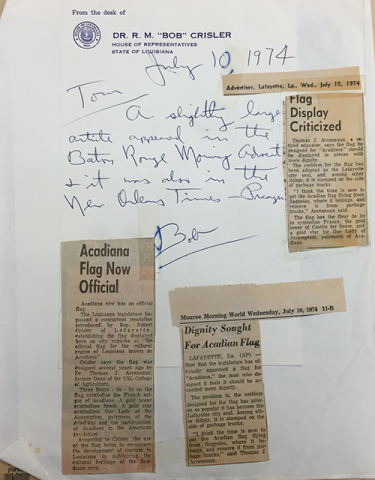 audience with French President Charles de Gaulle and how the flag became official
audience with French President Charles de Gaulle and how the flag became official - An official recognition from the state thanking Dr. Arceneaux for his work to preserve and support the French language in Louisiana
Other notable items you can find within the 300-plus collections are:
- Notebooks that detail when and where the University's first president, Dr. Edwin Stephens, planted oak seedlings on campus;
- The papers of Lafayette judge Richard Putnam, who oversaw the desegregation of Lafayette public schools in the 1970s;
- Mimeographed newsletters written by University president Dr. Joel Fletcher to students and faculty members who were serving in the military during World War II; and
- Papers that document parts of Ambassador Jefferson Caffery's career.
See It For Yourself
University Archive materials are available for anyone to view in the Jefferson Caffery Reading Room on the 3rd floor. Browse the archived collections, and decide which ones you want to view.
Just bring a photo ID, and you can leaf through the collections to delve deeper into Louisiana's history. View the Jefferson Caffery Reading Room Hours.

